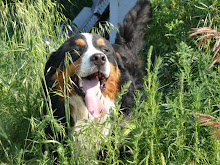The modern chicken isn't what it used to be. They have been bred to produce many, many more eggs than whats natural to them. In the process, chickens lose a lot their vital nutrients.
To rectify this man-made problem, sanctuaries often feed the eggs back to the chicken. I think that's the best alternative. It sounds bizarre and unnatural, but there isn't a whole lot that's natural about the animals we raise for food.
For example, turkeys can no longer breed on their own so they are artificially inseminated. The process is pretty violent for both males and females and probably traumatizing.
Nickvicious doesn't know as much about the modern chicken as he thinks he does.
In the past (more than 50 years ago) farmers usually kept a few chickens who would free range around the yard and were generally cared for by the farmers wife and the children.
The breed of chicken they kept was whatever was available locally.
The local breed varied from region to region.
The number of eggs laid varied from farm to farm and was dependent on a large number of factors.
In Italy there was a breed known as the leghorn that was a prolific layer of medium to large white eggs.
This breed of chicken has been around since at last Roman times, it is an ancient breed.
In the early 1950's farmers began to specialise in keeping laying hens and to keep costs as low as possible they wanted the breed that would produce the most eggs, so they filled their chicken sheds with Leghorns.
No-one did anything unnatural to the hens to make them lay more eggs. The eggs didn't lose any of their nutritional value.
Eggs became cheaper, cleaner, and standard - they were all white.
By the 1970's people were fed up of white eggs and some enterprising farmer (or more likely, his advertising agent), who had a breed other than leghorns, came up with the advertising ploy that brown eggs were nutritionally superior to white ones.
So suddenly everyone wanted brown eggs, but the brown egg laying hens didn't lay as many eggs as the leghorns did, so brown eggs were always more expensive.
To make brown egg production cheaper, poultry producers began crossing the leghorn with breeds of brown egg laying hens.
Nothing unnatural was ever done to the hens. All the farmers did was apply science.
As far as the turkeys are concerned, Yes they can breed, but not with the certainty of outcome that turkey producers require, so to keep costs down turkeys (the ones that will lay the eggs that will become poults that will grow into thanksgiving dinner) are artificially inseminated.
Secondly, there are many different breeds of turkey and the lack of breeding ability only applies to the large breasted varieties.
